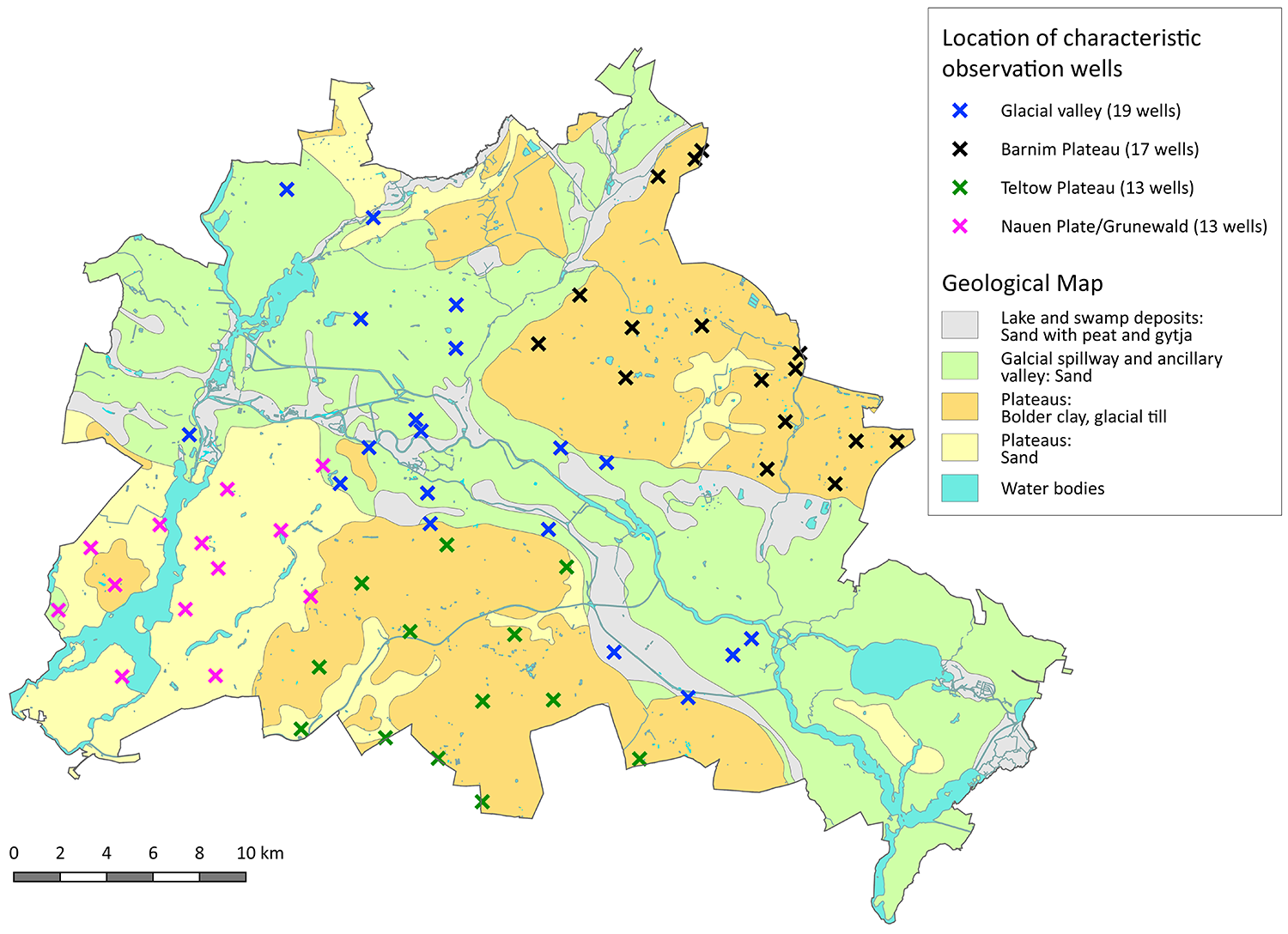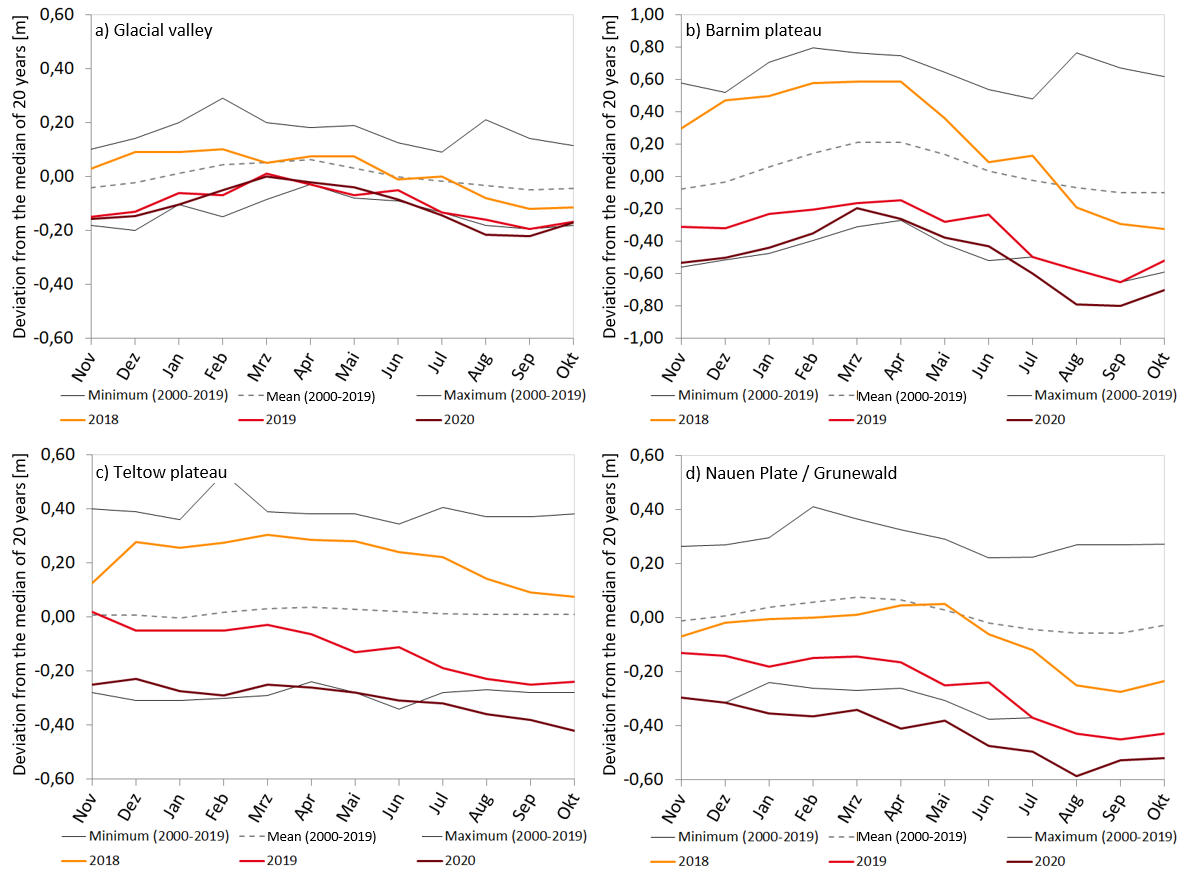In the Warsaw-Berlin glacial valley (Figure 12a), the low groundwater levels throughout the entire observation period are mainly a result of the dry year 2018. During 2018, groundwater levels decreased by around 0.20 m. This deficit was not restored in 2019 and 2020, which is why the groundwater levels were still below average in these years.
On the Barnim Plateau (Figure 12b), the groundwater levels decreased in the summer period 2018 three times stronger and in the summer period 2020 twice as strong as on average. As a result, the groundwater levels have also been extremely low here in recent years, despite the light saisonal increase during the winter months.
On the Teltow Plateau (Figure 12c), the groundwater levels measured for the hydrological year 2018 were approximately 0.10 to 0.30 m above the long-term mean. Since the hydrological year 2019, the groundwater levels are steadily decreasing and fall below the 20-year minimum groundwater level from July 2020. In October 2020, the groundwater levels were 0.42 m below the mean and thus 0.14 m lower than the lowest values measured in the entire reference period.
In the hydrogeological area Nauen Plate/Grunewald (Figure 12d), the groundwater levels show as well a strong negative trend. At the end of the hydrological year 2018, the levels were around 0.20 m below the long-term mean, at the end of the hydrological year 2019 already around 0.40 m below the long-term mean and at the end of the hydrological year 2020 around 0.50 m below the long-term mean. From January 2020, the values in this area were 0.12 m lower than the lowest values measured in the entire reference period.
The lack of precipitation in 2018 and 2019 results in a delayed reaction of the negative trends in groundwater levels in 2019 and 2020. Because of the drought years, and contrary to the normal seasonal course, there was no increase in groundwater levels between November and April in the hydrogeological areas of the Teltow Plateau and Nauen Plate/Grunewald (Figure 12d) in 2019 and 2020. This suggests that no significant groundwater recharge took place in these areas during the dry years.
The data of the groundwater level measurements and hydrographs of various observation wells are published on the website of the “Wasserportal
From 2000 to 2007, the raw water supply of the Berliner Wasserbetriebe for the public water supply initially decreased. In the years 2007 to 2014, between 202 and 207 million m³ of raw water was pumped per year. Since 2015 there has been an increase in raw water extraction. (Fig. 13).


